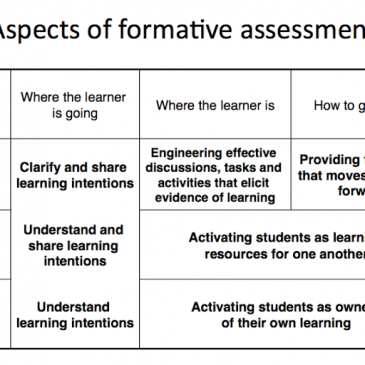The current emphasis on test-based accountability requirements of the No Child Left Behind [NCLB] Law (Congress, 2001) requires educators to teach the Common Core State Standards (CCSS) curriculum and evaluate what students have learned through standardized tests. K-12 American schools have responded to these requirements by narrowing the breadth of curriculum offerings and focusing teaching efforts on English and Math, specifically, the skill sets of reading, writing and arithmetic. The rise in interest of the role that arts education can play in this era of accountability is that the research on the effectiveness of arts education is rising above weak evidence and familiar advocacy to rigorous methodology and tantalizing findings. The different streams of research evidence reveal several promising trends in the role of the arts in student learning including the more specific role of arts integration in helping students learn.
However, the recent research stands on the shoulders of previous work in the field. Several researchers have been working diligently defining these streams of research in arts education. Although it is impossible to name all of the researchers or institutions, some of the names that are commonly referred to include John Dewey, Leon Winslow’s Integrated School Art Program, Harry Broudy, Stanford’s Eliot Eisner, Teachers College’s Maxine Greene, UCLA’s, James Catterall, Nelson Goodmen, David Perkins and Howard Gardner at Harvard’s Project Zero, Ellen Winner and Lois Hetland, Arnie April at Chicago Arts Partnership in Education, Dick Deasy’s Arts Education Partnership, Amy Duggins Pender at New York State Council on the Arts, Center for Arts Education in NYC, Lesley University’s arts integration curriculum, President’s Committee on the Arts and Humanity, and Gail Burnaford at The Kennedy Center.
The SchoolWorks Lab, Inc.’s 7-year, randomized treatment and control research on 35,000 students in Rochester, NY on integrating the arts into core curriculums can only make a small contribution to the larger understanding of arts education but that contribution has major implications for defining policy in arts education and school reform: students who experience quality arts integration in ELA and Math are likely to perform better intellectually and be accountable for what they know and can do (https://schoolworkslab.org/research/). Why not add arts integration to the national school reform priority for improving student learning throughout the nation?
Finally, it is important to note that the arts were the second discipline, after history, to adopt a set of standards all the way back in 1994. “Arts education standards can make a difference because, in the end, they speak powerfully to two fundamental issues that pervade all of education- quality and accountability” (Consortium of National Arts Education Associations, 1994). These two features, quality and accountability, are overlapping topics of current and ongoing political discussions regarding American education and therefore are of interest to the literature on arts integration research in Rochester City School District. This was also well understood in the 1990s when arts education standards, “ensure that the study of the arts is disciplined and well focused, and that arts instruction has a point or reference for assessing its results” (Consortium of National Arts Education Associations, 1994).
“In addressing these issues, the Standards insist on the following:
- That an arts education is not a hit-or-miss effort but a sequenced and comprehensive enterprise of learning across four arts disciplines, thus ensuring that basic arts literacy is a consequence of education in the United States;
- That instruction in the arts takes a hands-on orientation (i.e., that students be continually involved in the work, practice, and study required for effective and creative engagement in all four arts disciplines);
- That arts education can lead to interdisciplinary study; achieving standards involves authentic connections among and across the arts and other disciplines;
- That taken together, these Standards offer, for the first time in American arts education, a foundation for educational assessment on a student-by-student basis. ” (CNAEA, p. 10).
The different streams of arts research in an era of accountability have produced a variety of work that is ever more rigorous and that is producing ever more interesting and tantalizing results.




